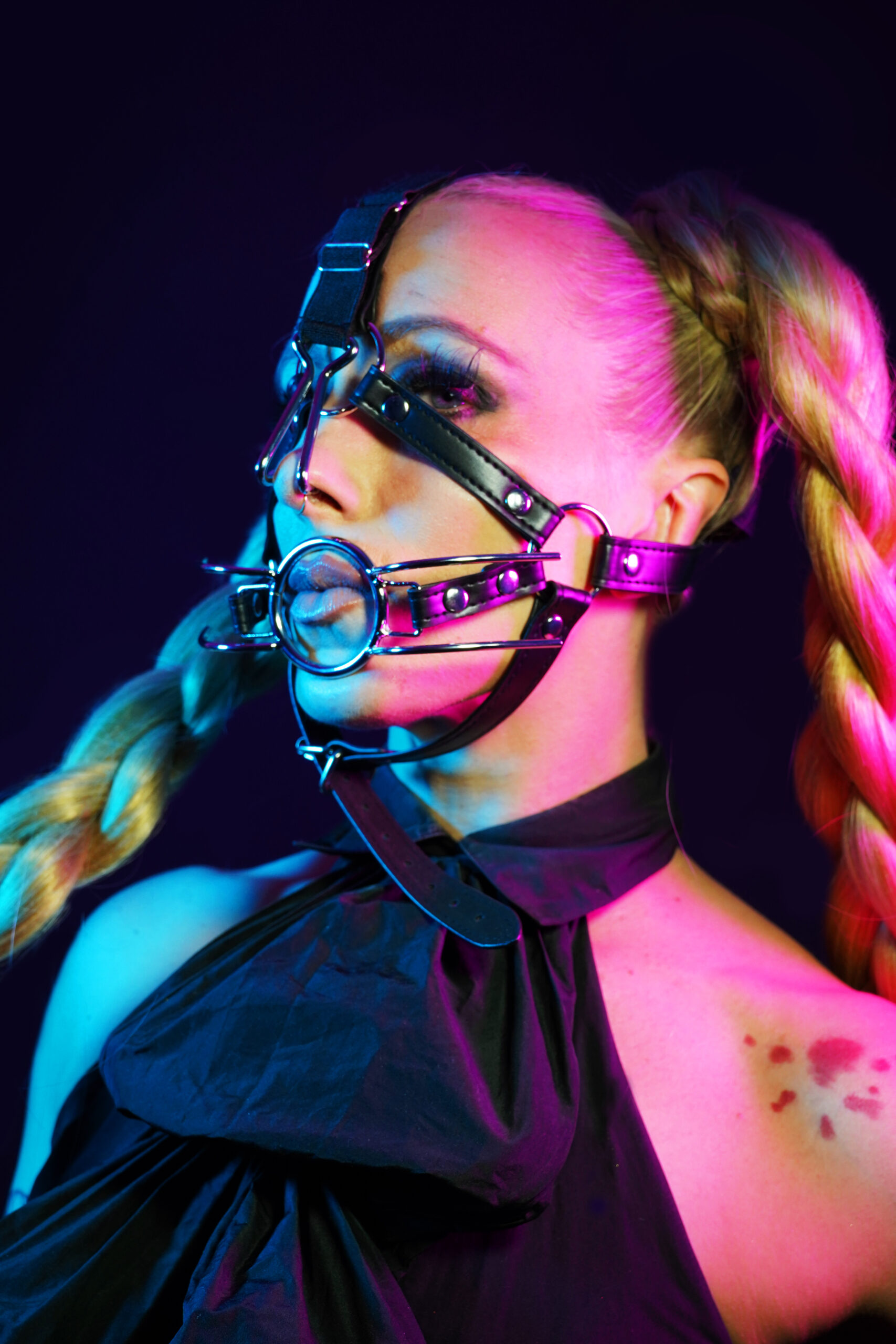How To Understand And Embrace Genderfluid Identity

Understanding Genderfluidity
Genderfluidity is a spectrum of gender identity in which an individual’s gender expression, feelings, and/or presentation may shift over time.
Defining Genderfluid
Understanding genderfluidity involves recognizing that gender is not always fixed or static.
Genderfluid individuals may identify as different genders at different times, or their gender identity may fluctuate within a single day.
It’s important to note that genderfluidity is distinct from other gender identities like transgender, which involves a permanent sense of gender identity that differs from the sex assigned at birth.
Genderfluid individuals might feel a strong connection to multiple genders, experience their gender as fluid and ever-changing, or identify as somewhere between traditional gender categories.
Respecting someone’s gender identity means using the pronouns and terms they identify with, even if their expression changes over time.
Characteristics of Genderfluidity
Understanding genderfluidity involves recognizing that gender is a spectrum, not a binary.
Genderfluid individuals may experience shifts in their gender identity, expression, or both, over time. This can involve identifying as different genders on different days, feeling a mix of genders simultaneously, or experiencing fluidity within a single day.
It’s essential to remember that genderfluidity is not about confusion or indecisiveness; it’s about embracing the complexity and fluidity of gender identity.
Respecting someone who identifies as genderfluid means using their correct pronouns and respecting any changes they may make over time.
Open communication and willingness to learn are key to creating an inclusive and supportive environment for genderfluid individuals.
Spectrum of Gender Expression
Genderfluidity is a spectrum of gender identity in which an individual’s gender expression, feelings, and/or presentation may shift over time. Understanding genderfluidity involves recognizing that gender is not always fixed or static.
- Genderfluid individuals may identify as different genders at different times, or their gender identity may fluctuate within a single day.
- It’s important to note that genderfluidity is distinct from other gender identities like transgender, which involves a permanent sense of gender identity that differs from the sex assigned at birth.
- Genderfluid individuals might feel a strong connection to multiple genders, experience their gender as fluid and ever-changing, or identify as somewhere between traditional gender categories.
Respecting someone’s gender identity means using the pronouns and terms they identify with, even if their expression changes over time.
Understanding genderfluidity involves recognizing that gender is a spectrum, not a binary.
Genderfluid individuals may experience shifts in their gender identity, expression, or both, over time. This can involve identifying as different genders on different days, feeling a mix of genders simultaneously, or experiencing fluidity within a single day.
It’s essential to remember that genderfluidity is not about confusion or indecisiveness; it’s about embracing the complexity and fluidity of gender identity.
Respecting someone who identifies as genderfluid means using their correct pronouns and respecting any changes they may make over time.
Open communication and willingness to learn are key to creating an inclusive and supportive environment for genderfluid individuals.
Embracing a Genderfluid Identity
Embracing a genderfluid identity involves understanding that gender is a spectrum, not a binary. Genderfluid individuals may experience shifts in their gender identity, expression, or both, over time. This fluidity can manifest in various ways, such as identifying as different genders on different days or feeling a mix of genders simultaneously. It’s crucial to respect someone who identifies as genderfluid by using their correct pronouns and acknowledging any changes they may make over time.
Self-Discovery and Reflection
Embracing a genderfluid identity is a journey of self-discovery and acceptance. It begins with understanding that gender is not a fixed or binary concept, but rather a spectrum. Genderfluid individuals experience shifts in their gender identity, expression, or both, over time. These shifts can be gradual or sudden, and they may vary from person to person.
Self-reflection is essential for anyone exploring their gender identity. Spend time reflecting on your feelings, experiences, and what feels authentic to you. Pay attention to how you express yourself, the pronouns that feel right, and the way you identify with different gender roles and stereotypes.
Remember that there is no “right” or “wrong” way to be genderfluid. Some individuals may have periods where they strongly identify with one gender, while others may experience a more constant fluidity. There’s also no need to label yourself definitively if you’re still exploring.
Surround yourself with supportive people who are willing to listen and learn about your journey. Connecting with other genderfluid individuals can provide valuable insights, support, and a sense of community.
Coming Out and Disclosure
Embracing a genderfluid identity involves understanding that gender is a spectrum, not a binary. Genderfluid individuals may experience shifts in their gender identity, expression, or both, over time. This fluidity can manifest in various ways, such as identifying as different genders on different days or feeling a mix of genders simultaneously.
Embracing a genderfluid identity is a journey of self-discovery and acceptance. It begins with understanding that gender is not a fixed or binary concept, but rather a spectrum. Genderfluid individuals experience shifts in their gender identity, expression, or both, over time. These shifts can be gradual or sudden, and they may vary from person to person.
Self-reflection is essential for anyone exploring their gender identity. Spend time reflecting on your feelings, experiences, and what feels authentic to you. Pay attention to how you express yourself, the pronouns that feel right, and the way you identify with different gender roles and stereotypes.
Remember that there is no “right” or “wrong” way to be genderfluid. Some individuals may have periods where they strongly identify with one gender, while others may experience a more constant fluidity. There’s also no need to label yourself definitively if you’re still exploring.

Surround yourself with supportive people who are willing to listen and learn about your journey. Connecting with other genderfluid individuals can provide valuable insights, support, and a sense of community.
Building Support Systems
Embracing a genderfluid identity begins with understanding that gender is a spectrum, not a binary. Genderfluid individuals may experience shifts in their gender identity, expression, or both over time. This fluidity can manifest in various ways, such as identifying as different genders on different days or feeling a mix of genders simultaneously.
Self-reflection is essential for anyone exploring their gender identity. Spend time reflecting on your feelings, experiences, and what feels authentic to you. Pay attention to how you express yourself, the pronouns that feel right, and the way you identify with different gender roles and stereotypes.
Remember there’s no “right” or “wrong” way to be genderfluid. Some individuals may have periods where they strongly identify with one gender, while others may experience a more constant fluidity. There’s also no need to label yourself definitively if you’re still exploring.
Surround yourself with supportive people who are willing to listen and learn about your journey. Connecting with other genderfluid individuals can provide valuable insights, support, and a sense of community.
Building a support system is crucial for anyone navigating their gender identity, especially those who identify as genderfluid.

Start by seeking out online communities and support groups specifically for genderfluid individuals. These spaces provide a safe and understanding environment to connect with others who share similar experiences.
Look for local organizations or LGBTQ+ centers that offer resources and support for genderfluid people. They may host workshops, social events, or one-on-one counseling services.
Don’t hesitate to reach out to friends and family members who you trust and feel comfortable sharing your identity with.
Educating those around you about genderfluidity can also be helpful. Sharing resources and explaining your experiences can foster empathy and understanding.
Navigating Societal Expectations
Navigating societal expectations while embracing a genderfluid identity can be challenging. Gender norms often pressure individuals to conform to rigid categories of male and female, which may conflict with the fluidity of gender expression experienced by genderfluid people.
Addressing Misconceptions and Stereotypes
Addressing these misconceptions and stereotypes starts with education and open communication.
It’s important to challenge the idea that gender is binary and fixed. Explain that gender is a spectrum, and that genderfluidity is a valid and natural expression of identity.
Sharing personal experiences and stories can help humanize genderfluidity and break down stereotypes.
Encourage empathy and understanding by emphasizing that genderfluid individuals are simply living authentically as themselves.
Communicating Preferences
Navigating societal expectations while embracing a genderfluid identity can be challenging. Gender norms often pressure individuals to conform to rigid categories of male and female, which may conflict with the fluidity of gender expression experienced by genderfluid people.
One way to navigate these expectations is to focus on self-acceptance and authenticity.
Prioritize your own well-being and express yourself in ways that feel genuine and comfortable.
Remember that you have the right to define your own gender identity and expression, regardless of societal pressures.
It’s also important to build a support system of people who are accepting and understanding.
Surround yourself with friends, family, or community members who respect your identity and offer encouragement.
Remember that you are not alone in this journey.
Advocacy and Allyship
Navigating societal expectations while embracing a genderfluid identity can be challenging. Gender norms often pressure individuals to conform to rigid categories of male and female, which may conflict with the fluidity of gender expression experienced by genderfluid people.
One way to navigate these expectations is to focus on self-acceptance and authenticity. Prioritize your own well-being and express yourself in ways that feel genuine and comfortable. Remember that you have the right to define your own gender identity and expression, regardless of societal pressures.
It’s also important to build a support system of people who are accepting and understanding. Surround yourself with friends, family, or community members who respect your identity and offer encouragement. Remember that you are not alone in this journey.
Advocacy for genderfluid individuals involves working to create a more inclusive and equitable society where all genders are respected and valued.
This can involve:
Educating others about genderfluidity and challenging stereotypes.
Promoting policies that protect the rights of transgender and genderfluid individuals, such as non-discrimination laws in housing, employment, and healthcare.
Supporting organizations that provide resources and support for genderfluid people.
Creating safe and inclusive spaces for genderfluid individuals to express themselves freely.
Allyship involves standing in solidarity with marginalized groups, such as genderfluid individuals, and working to dismantle systems of oppression.

Here are some ways to be an ally to genderfluid people:
- Listen attentively when someone shares their experiences and perspectives.
Educate yourself about gender identity and expression.
Use the correct pronouns and names that people identify with.
Challenge discriminatory language and behavior when you encounter it.
Advocate for policies and practices that promote equality for all genders.
Support organizations that work to advance the rights of genderfluid individuals.
Remember, being an ally is an ongoing process that requires continuous learning, reflection, and action.
Resources and Support
Finding support and information is crucial for understanding and embracing a genderfluid identity. There are many resources available to help you on this journey.
Organizations and Communities
Several organizations provide valuable support, information, and advocacy for genderfluid individuals:
The Trevor Project: Offers crisis intervention and suicide prevention services to LGBTQ+ youth.
GLAAD: Works to promote LGBTQ+ acceptance through media advocacy.
Human Rights Campaign (HRC): Advocates for LGBTQ+ equality through policy change, education, and public awareness campaigns.
Gender Spectrum: Provides resources, education, and support for gender-expansive children, youth, and families.
Trans Lifeline: A peer support hotline run by and for transgender people.
These organizations offer a wealth of information about genderfluidity, provide support services, and advocate for the rights of genderfluid individuals.
Online Resources and Forums
Online resources and forums can be invaluable for connecting with others, finding support, and learning more about genderfluidity.
Websites like:
Gender Spectrum: Offers information, resources, and support for gender-expansive individuals and their families.
GLAAD: Provides news, resources, and advocacy related to LGBTQ+ issues, including genderfluidity.
The Trevor Project: Offers crisis intervention and suicide prevention services for LGBTQ+ youth, including those who are genderfluid.
Online forums and social media groups dedicated to genderfluidity can provide a safe space to connect with others who understand your experiences. Sharing stories, asking questions, and finding support from peers can be incredibly helpful during the journey of self-discovery.
Therapy and Counseling
Navigating societal expectations while embracing a genderfluid identity can be challenging. Gender norms often pressure individuals to conform to rigid categories of male and female, which may conflict with the fluidity of gender expression experienced by genderfluid people.
One way to navigate these expectations is to focus on self-acceptance and authenticity. Prioritize your own well-being and express yourself in ways that feel genuine and comfortable. Remember that you have the right to define your own gender identity and expression, regardless of societal pressures.
It’s also important to build a support system of people who are accepting and understanding. Surround yourself with friends, family, or community members who respect your identity and offer encouragement. Remember that you are not alone in this journey.
Advocacy for genderfluid individuals involves working to create a more inclusive and equitable society where all genders are respected and valued. This can involve:
* Educating others about genderfluidity and challenging stereotypes. Promote policies that protect the rights of transgender and genderfluid individuals, such as non-discrimination laws in housing, employment, and healthcare. Support organizations that provide resources and support for genderfluid people. Creating safe and inclusive spaces for genderfluid individuals to express themselves freely.
Allyship involves standing in solidarity with marginalized groups, such as genderfluid individuals, and working to dismantle systems of oppression.
Here are some ways to be an ally to genderfluid people:
* Listen attentively when someone shares their experiences and perspectives.
* Educate yourself about gender identity and expression.
* Use the correct pronouns and names that people identify with.
* Challenge discriminatory language and behavior when you encounter it.
* Advocate for policies and practices that promote equality for all genders.
* Support organizations that work to advance the rights of genderfluid individuals.
Remember, being an ally is an ongoing process that requires continuous learning, reflection, and action.
Finding support and information is crucial for understanding and embracing a genderfluid identity. There are many resources available to help you on this journey.
Several organizations provide valuable support, information, and advocacy for genderfluid individuals:
* **The Trevor Project:** Offers crisis intervention and suicide prevention services to LGBTQ+ youth plus size bodysuits .
* **GLAAD:** Works to promote LGBTQ+ acceptance through media advocacy.
* **Human Rights Campaign (HRC):** Advocates for LGBTQ+ equality through policy change, education, and public awareness campaigns.
* **Gender Spectrum:** Provides resources, education, and support for gender-expansive children, youth, and families.
* **Trans Lifeline:** A peer support hotline run by and for transgender people.
These organizations offer a wealth of information about genderfluidity, provide support services, and advocate for the rights of genderfluid individuals.
Online resources and forums can be invaluable for connecting with others, finding support, and learning more about genderfluidity. Websites like:
* **Gender Spectrum:** Offers information, resources, and support for gender-expansive individuals and their families.
* **GLAAD:** Provides news, resources, and advocacy related to LGBTQ+ issues, including genderfluidity.
* **The Trevor Project:** Offers crisis intervention and suicide prevention services for LGBTQ+ youth, including those who are genderfluid.
Online forums and social media groups dedicated to genderfluidity can provide a safe space to connect with others who understand your experiences. Sharing stories, asking questions, and finding support from peers can be incredibly helpful during the journey of self-discovery.
sex toys uk
Elizabeth Joy Photo
Yes Nutrition Solutions
- Why Does Lip Filler Not Last On Me - November 10, 2025
- Obagi Nu-Derm System For Dark Spots And Pigmentation In Kingston Upon Thames Surrey London - November 10, 2025
- What Is The Best Treatment For 70 Year Old Skin On Face? - November 9, 2025


